Vintage Treasures: Phaid the Gambler by Mick Farren
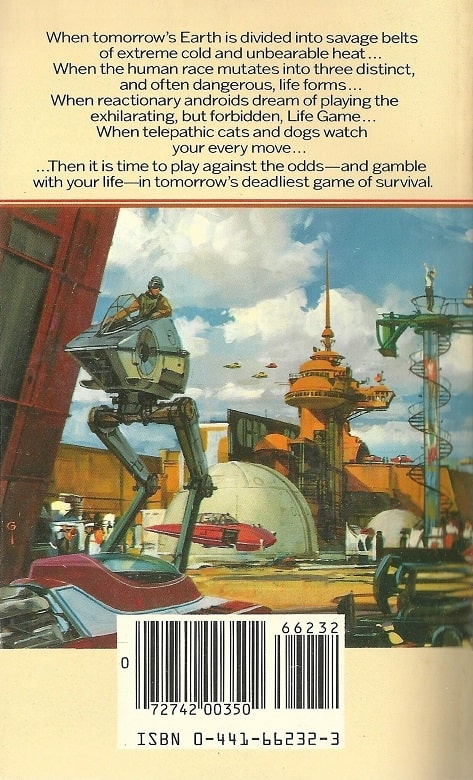 |
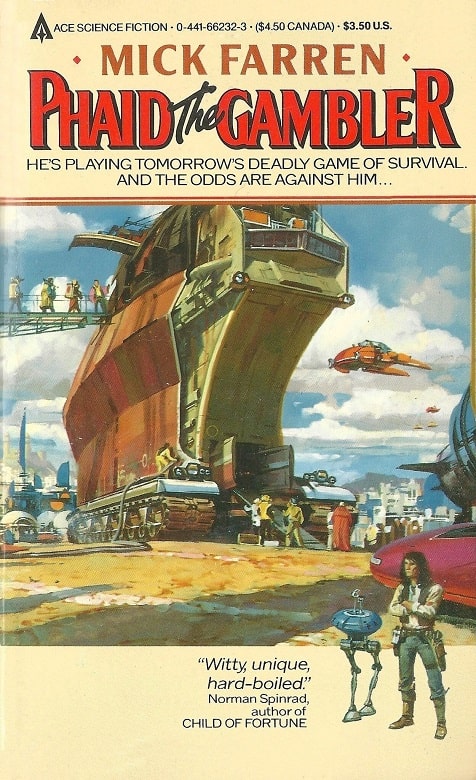 |
Phaid the Gambler (Ace Books, August 1986). Cover by Jim Gurney
Mick Farren was a fascinating guy.
He was the singer for the UK band The Deviants in the 60s, and released two solo albums in the late 70s, and a live album in 2005. He began his writing career in the early 1970s as a journalist for the UK Underground press, and eventually the mainstream New Musical Express. By the end of the 70s he was supporting himself as a full time writer, and over a 30-year career he published 23 novels before his death in 2013 at the age of 69. He died after collapsing on stage during a Deviants concert in London in July 2013.
[Click the images to gamble on larger versions.]
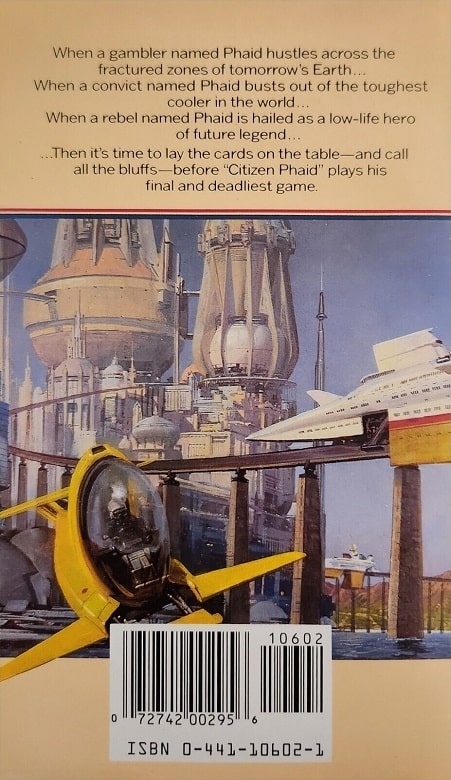 |
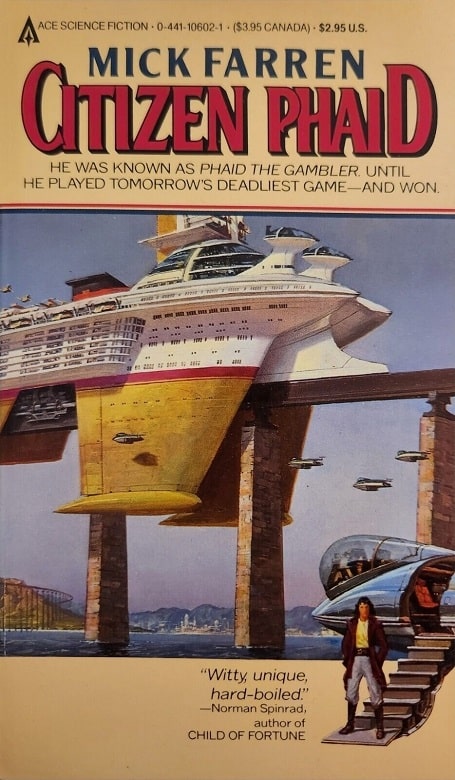 |
Citizen Phaid (Ace Books, January 1987). Cover by Jim Gurney
Farren’s science fiction career was an exceptional one, with popular series such as the Victor Renquist vampire novels and The DNA Cowboys sequence, and standalone novels like The Long Orbit (1988), The Armageddon Crazy (1989), and Jim Morrison’s Adventures in the Afterlife (1999).
One of the first Farren novels to get my attention was Phaid the Gambler, published by Ace Books in January 1987. Almost certainly, the thing that draw my eye was the extremely Star Wars-inspired cover art by Jim Gurney, with clear echoes of the Jawas sandcrawler on the cover, and an AT-RT walker on the back.
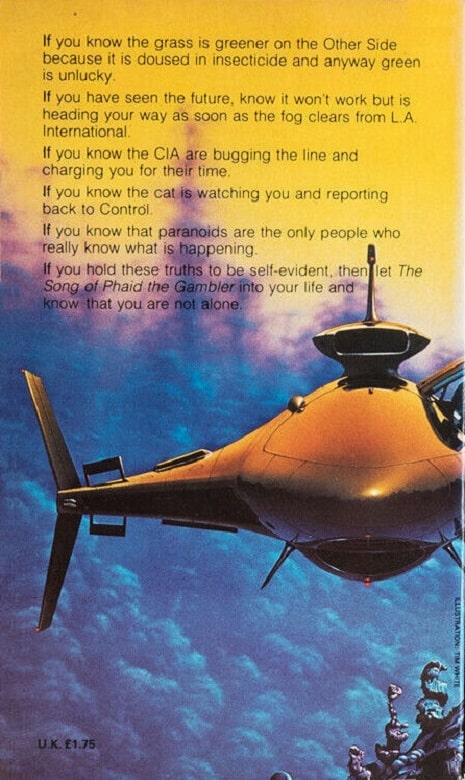 |
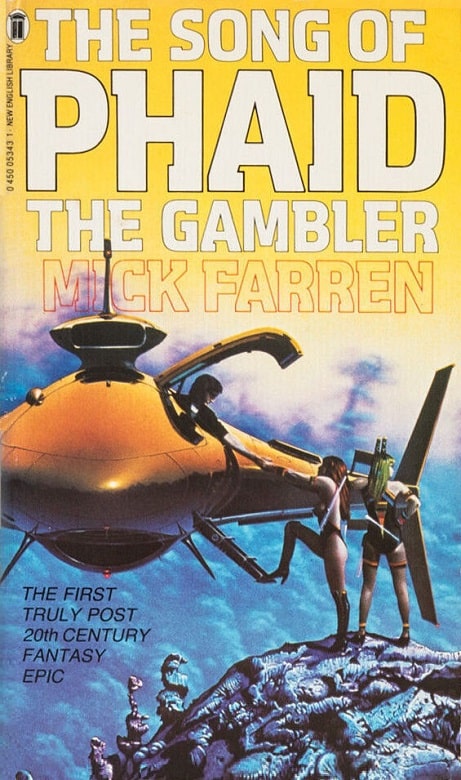 |
The Song of Phaid the Gambler original UK edition (New English Library, October 1981). Cover by Tim White
Phaid the Gambler was originally published by New English Library in the UK in 1981 in a single 537-page edition titled The Song of Phaid the Gambler. It was revised and broken into two volumes for US publication by Ace Books, Phaid the Gambler (1986) and Citizen Phaid (1987).
The brief note on the US revision I found at ISFDB reads:
Although the first volume of the revised version ends at the end of Chapter 17, the text is different from the text at the end of Chapter 17 of the original version, so it’s not clear where the break is nor is it clear what the extent of the revisions was.
I don’t have a copy of the UK release, and haven’t found any more detail.
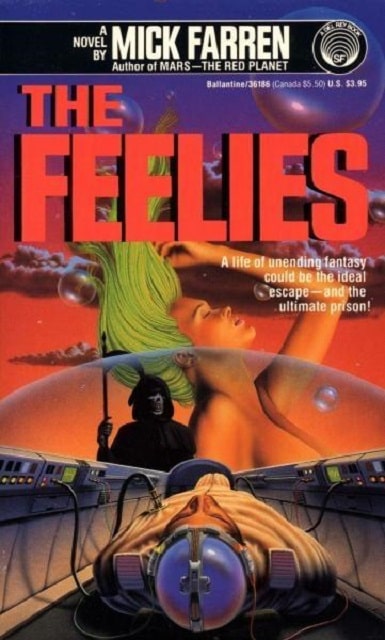 |
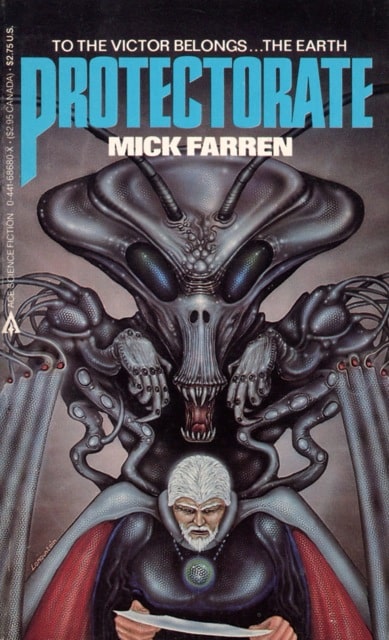 |
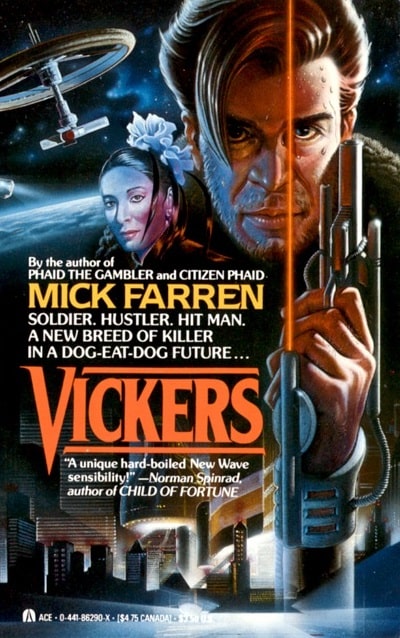 |
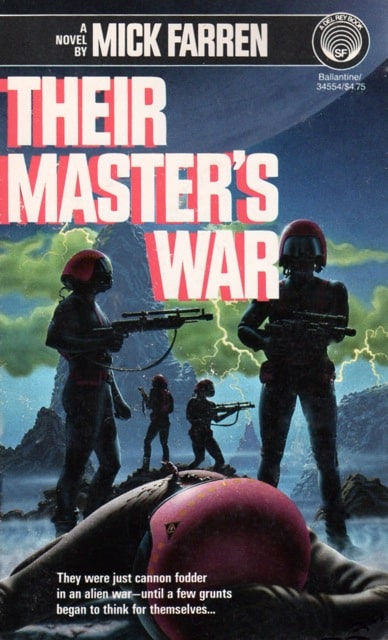 |
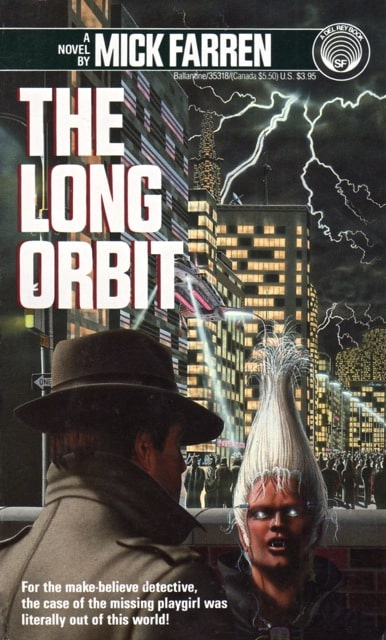 |
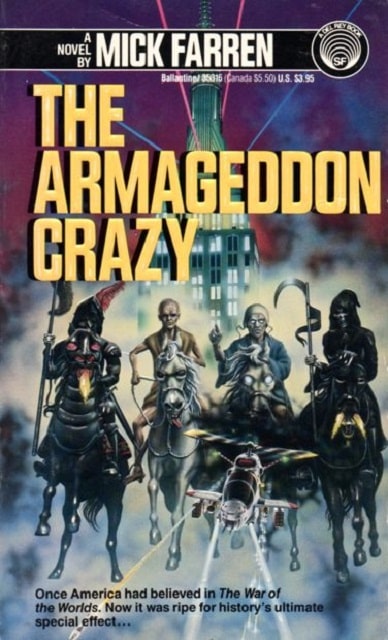 |
A sampling of Farren’s other SF novels: The Feelies (Del Rey, June 1990),
Protectorate (Ace, January 1985), Vickers (Ace, July 1988), Their Master’s War
(Del Rey, January 1988), The Long Orbit (Del Rey, September 1988), The Armageddon Crazy
(Del Rey, May 1989). Covers by David Schleinkofer, Dan La Mountain, and Kang Yi
Phaid the Gambler is a gonzo road trip novel set in a dystopian future with a western vibe. The best description I’ve found is by Chris at Goodreads.
This is a dystopian view of a future world ruined by a breakdown in weather machines. It is a road trip with diverse adventures concluding in a post apocalyptic revolutionary outbreak that has elements of the French revolution and the anarchy of post great war Berlin. There are aliens waiting for the humans to kill themselves, aristocrats who are treacherous but brave, fanatic clerics, and a variety of interesting new drugs.
The novel is still enjoyed by casual readers today. Here’s a 2016 review by Patrick Andrew.
One of my my top ten favorites. Loved all of Micks sci fi and this one in particular. Dunno is it was the time of life I read it (teenager) or the because of the when it was written (80s) but it felt that the opulent but dystopian future full of opportunities but with pitfalls round every corner was such a rollercoaster ride that you just didn’t want to get off. Think wild west coupled with the decline of Rome and a healthy dose of drug culture and you won’t be a thousand miles away from the feel.
Recommended reading for any Sci Fan and mandatory for the dystopian futures fans among you.
Here’s Chad Eagleton on the sequel, Citizen Phaid.
This book finds our drunken, gambler hero caught up in a revolution, thrown in jail as a “political prisoner,” and forced to serve as an unwilling pawn in a scheme hatched by an alien mind. The story moves very well and fast but it’s not really an action-filled, heavily-plotted novel if that’s what you’re looking for. The strength of Mick’s science fiction has always been his world building and his focus on those aspects of life that most science fiction writers tend to ignore: pop culture, art, drugs, sex, revolution, politics, class, and simply the day-to-day aspects of human interactions and relationships. These are all showcased here and, thanks to a slightly less “far out” storyline, make it one of his strongest and most approachable books.
Here’s the complete publishing details.
The Song of Phaid the Gambler (New English Library, 537 pages, £1.75 in paperback, October 1981) — cover by Tim White
Phaid the Gambler (Ace Books, 296 pages, $3.50 in paperback, August 1986) — cover by Jim Gurney
Citizen Phaid (Ace Books, 234 pages, $2.95 in paperback, January 1987) — cover by Jim Gurney
The books have been out of print for over 35 years in both the UK and the US, and there are no digital editions.
See all our recent Vintage Treasures here.
I recently picked up a mismatched set. Phaid the Gambler and The Song of Phaid. At the time I was not aware of the split and revision. They looked cool so I didn’t research, just assumed Song was a sequel. They came together in the same auction so didn’t have much choice anyhow.
I later read somewhere about the revision and yes a mild scan of each doesn’t indicate a specific break where Phaid ends and I suppose Citizen picks up. Being the completist I am, I will likely grab Citizen Phaid if I encounter it. Although not so sure I will try read both versions unless the revision is so major as to affect the plot.
The Song of Phaid is on my To Read shelf. Maybe I will fasttrack Iit when I finish my current read – The World’s of Science Fiction ed Robert P. Mills Panther 1966
Ha ha been liking your little humour in your “click here to enlarge image” blurbs John. It hasn’t gone unnoticed.
Hi Tony,
I’d love to have a reliable report on the substance of the revisions if you ever suss them out. Drop by and let us know!
And I appreciate the comment on my habitual instructions on enlarging images. There’s only so many times you can write “Click on images for larger versions.” After I’d written that sentence some 3,000 times at Black Gate, I was pretty sure I never wanted to do it again. For the past 5-6 years, I’ve made efforts to do it a little differently every time. 🙂
I vaguely noticed the Phaid books when they came out, and I kind of thought the author’s name looked familiar — again only vaguely. It was much later that I learned he was a rock star before he was a writer. (Who else fits this category? Michael Moorcock? (Not really.) Sarah Pinsker? I’m sure I’m missing someone … (Dave Langford? No, wait a minute, the rock star is his brother Jon.)
Those Phaid books look interesting. I should check them out.
Rich,
I know Janis Ian dabbles in science fiction, and still is an active performer. I’m sure there are a few more I’m forgetting.
Let me know if you ever read the PHAID books. Love to have a real review, instead of the usual fast summary coverage in my Vintage Treasures posts. I gave up writing reviews long ago, when I realized I could write 3-4 short New Treasures or Vintage Treasures pieces in the time it took me to prepare and write a single decent review.
Didn’t Kinky Friedman write some mystery novels? And does Bob Dylan count? Chronicles Volume One isn’t fiction, but it is one of the best books I’ve ever read.
Thomas — he sure did. I’m embarrassed to admit that, while I knew Kinky Friedman was a mystery novelist, I had no idea he was a singer!
I haven’t read Chronicles Volume One, but that’s a heckuva endorsement.
Oh my goodness – go to Youtube immediately and listen to the Ballad of Charles Whitman. Maybe the most glorious bad taste song ever!
Rockstars. Wouldn’t the content of Mr Rizlin’s Swords of Steel series qualify?
Tony,
Good point! That’s a fantasy anthology, but I guess that’s splitting hairs at this point.
John has mentioned Mick Farren before and while I knew the name was familiar, I couldn’t pinpoint what I’d read by him. Until I saw this cover –
https://www.amazon.com/Protectorate-Mick-Farren/dp/0450057089
Not that it brought on a sudden rush of memories (and in fairness, like most Black Gate regulars, I’ve read hundreds of SF books) but if his name struck a chord, then there was something about Protectorate that made it above average, albeit not enough to remember it in any detail. Faint praise, I know…
Hi Aonghus,
I’ve seen a few different appraisals of Farren’s SF career. Several folks on Goodreads dismissed some of his early work as not as strong as his more mature novels. But John Clute at The Science Fiction Encyclopedia seemed to think exactly the opposite, that his early work had a vibrancy and energy the later stuff lacked:
“After Protectorate (1984), set in an Earth run by Aliens, his work began to seem derivative of the cyberpunk writers who had in fact followed him. Corpse (1986; vt Vickers 1988), The Long Orbit (1988; vt Exit Funtopia 1989) and Armageddon Crazy (1989) have in common violent action, desolate Near-Future venues and spiritual malaise. Their Master’s War (1988) concerns the ruthless use of helpless species in an unending interstellar conflict. Jim Morrison’s Adventures in the Afterlife (1999) reproduces in less gripping fantasy terms some of the sf innovations hinted at in The Texts of Festival.”
See the complete entry here:
https://sf-encyclopedia.com/entry/farren_mick
Thanks for the link, John – reminds me of the old saw about writers getting better at saying something (as they grow older) while having less and less to say!
Protectorate was the only book I ever came across by Farren in a Dublin bookshop. I didn’t know he was so prolific, but am now curious enough to track down and re-read Protectorate, if only to see what it’s actually like and how forty years might have changed my take on it.
Definitely worth checking out.